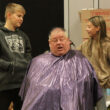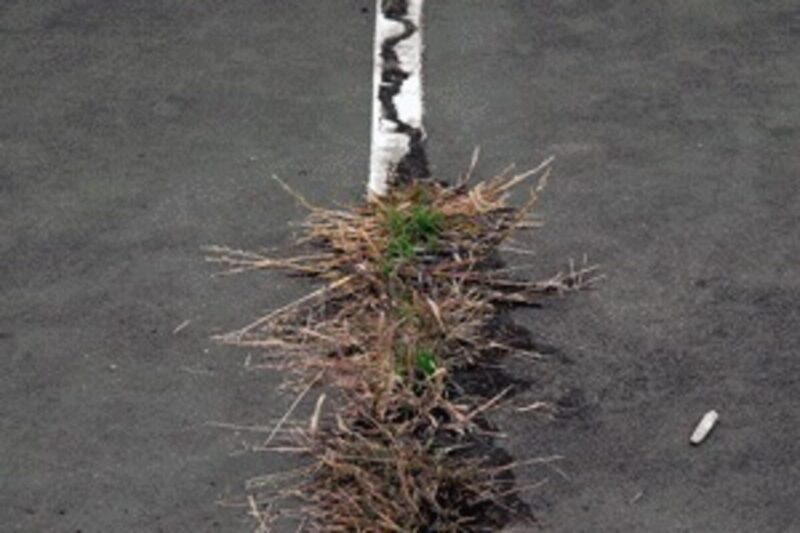Sean C. Morgan
Of The New Era
The District 55 School Board Monday answered the Sweet Home Economic Development Group’s $100,000 offer for the removal of the high school tennis courts with a counterproposal that asks for all of the money without any match requirements.
Under the decision, the board would allocate all of the money related to the tennis court to replacing the courts at a location to be determined later.
The board voted 8-1 at its regular meeting on Monday night after receiving a report from a committee looking into the tennis courts. Voting yes on the counterproposal were board members Ken Roberts, Jeff Lynn, Diane Gerson, Chairman Mike Reynolds, Leena Neuschwander, David VanDerlip, John Fassler and Jason Redick. Chanz Keeney voted no, opposing the removal of the tennis courts altogether.
In August, SHEDG Board President Ron Moore told the School Board that SHEDG would give the district $25,000 to remove the tennis courts on the south side of the school. In each of the following three years, SHEDG would match up to $25,000 in money raised for or provided by the School District, a total of $75,000 available if the matching funds are raised.
SHEDG owns and operates the Oregon Jamboree country music festival, which uses the grounds south of the high school for three days annually in early August.
The board declined to accept tthe offer in August and instead put together a committee to figure out a location for new courts, costs and other details.
In the meantime, Supt. Larry Horton received a letter, he said, from the district’s insurance carrier telling him to shut down the two courts on the east end because of cracks and a depression that made playing on them dangerous. The remaining four courts, with cracks filled, would be safe to use, he said.
The committee recommended building new courts in the space next to the Bus Barn, with the parking lot across Long Street from the high school as its second choice. It also looked at rebuilding the courts where they are, which means SHEDG would pay none of the cost; near right field at the high school junior varsity baseball field and at or near Sankey Park.
Atlas Track and Field, a company that builds courts, estimated the construction of four tennis courts at $168,000 and six new courts at $216,000 at the existing site, including the removal of the old courts.
Schools of similar size get by with four courts, Athletic Director Dave Goetz said, giving the committee report to the board. One physical education teacher wants six courts, but two others told Goetz that four courts were adequate.
Atlas has previously hinted that the courts could not be repaired without rebuilding them, Goetz said.
If the courts were removed, the cost of seeding them and creating a green, irrigated playing surface would be between $3,000 and $3,300, Goetz said, based on what the district’s Maintenance Department told him.
Taking down the courts would make the high school softball and soccer fields the right size, committee member Ron VavRosky told the board.
With the exception of Keeney, board response to the report and offer was mixed, with concerns about when the district would be able to rebuild the courts and where it would get the money to match SHEDG’s offer.
Generally, the board members agreed that the courts should be removed, and the district should accept SHEDG’s money.
Throwing money into those courts is “not good money management,” Roberts said. Roberts was concerned about doing something too soon, before seeing how it fits into the big picture.
“I have a problem with spending that kind of money for tennis courts we don’t use a lot,” Gerson said. “I think we need to take the existing courts out.”
She thought the courts might be combined into a sports complex including the remodel of the football stadium, she said, but “we have so many other issues we’re concerned with at this point.”
“The courts should come out,” Lynn said. “We should access that money. (But) I’d hate to see us jump in without knowing where the new courts are to go.”
He suggested taking the money and removing the courts while taking a long-range look at replacing them.
Fassler suggested placing the money in a trust fund dedicated to replacing the tennis courts later.
“The hope was this was something the community could get excited about,” said Kevin Strong, a member of the SHEDG board and District 55 business manager. The proposal could be used to leverage dollars from the community.
He is abstaining from the issue during SHEDG board meetings, he said.
“How many times do you go to your community and ask for extra money?” Roberts asked. The district is already doing that with the football stadium, and he wants “them to get excited about academics too.”
Keeney “finally” got out and looked at the courts himself, he said.
“I see cracks that could be filled. They fill cracks on city streets.”
As far as the two on the east end, he said, the nets can be removed and basketball hoops put up.
“I think the community could get more life out of them,” Keeney said. The Jamboree wants the courts out, but they’re flatter than the field. He suggested removing the fencing and letting the Jamboree use the courts until it eventually moves to a new location.
SHEDG is only offering $25,000, and the following costs are more money out of the district’s pockets, he said. “I would like to see these things repaired so they’re functional.”
If nothing else, the district could get a grant for $50,000, something others had talked about, Keeney said. That would be more than SHEDG’s $25,000.
But, Fassler argued, SHEDG is offering $100,000. Combine that with a $50,000 grant, and the district has much more to work with. With SHEDG’s offer, the district has $25,000 on the one hand. On the other hand, it has nothing.
“You have tennis courts,” Keeney replied, adding that the elementary playgrounds are in worse shape than the tennis courts, yet they’re insured for children’s use.
“If we don’t do something this year, I think we’ll lose all that SHEDG money,” VanDerlip said. If the district tears the courts out, it’ll be without them for a year or two or more.
“There is a lot of analysis that needs to be (done) before we select a site,” he said, and the district needs to ensure it has money for maintenance and to replace the courts at the end of their useful life beforehand.
“I think the courts are unsafe,” Neuschwander said. It’s $216,000 to build six courts, less for four. With community help, she said, she thinks it could be done for even less.
“It’s a fairly large chunk of money waved in our faces,” Redick said. If the insurance company is saying don’t use two of the courts, the district has a big liability and the world’s most popular sport, soccer, is growing in popularity in the United States and Sweet Home. The district needs to look forward to its growth and make some room for the soccer field.
He doesn’t want to take tennis out of the district either, he said.
Reynolds said he agreed the courts need to be removed and rebuilt later. He also would support asking SHEDG to remove the strings it has attached to the money.
VanDerlip agreed that he would feel better if SHEDG would give the district the whole $100,000, with just the stipulation that it be used on sports programs. He isn’t sure the district can get all the matching funds SHEDG wants.
VavRosky, who plays tennis, told the board he was concerned that if the courts were removed, “there will be nothing.”
Board members assured him that the courts would be replaced, although it may take a couple of years.
Horton recommended that the board ask for the $100,000 up front, tear out the courts and start looking for grants as soon as possible to build four new courts elsewhere. The track was rebuilt for about half the total estimated cost with the in-kind help of community members. He thought the same might work for the courts, possibly dropping the cost below $100,000.
The board approved a motion to ask the SHEDG board for the $100,000 this year with no match requirement with the courts to be torn out and rebuilt later in a new location yet to be announced.
“I can’t speak for the (SHEDG) board,” Strong said. Due to his conflict of interest, he is abstaining from the issue, but it will be on the agenda for the Oct. 17, SHEDG meeting.
In other business, the board approved a four-year contract with classified employees, from 2007 to 2011. The agreement includes raises of 3 percent, 2.5 percent, 3 percent and 2.5 percent each year of the contract. The district’s contribution to health benefits increase to $740, $780, $820 and then $860 each year of the contract.





